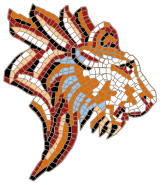|
|
|
Submission > Guidelines for submission
Abstracts should be sent in English, via the Submitting section of the website. Those submitting texts are kindly requested to do their utmost to provide a good translation of their text.
The abstract should include the following information:
Title of the paper
Name (full first and surname), institution, postal address, e-mail
Topic
Type of presentation: oral or poster
Abstract with references (max. 1200 words), 3 figures and figure captions
Authors
If there is more than one author, please specify the person who will be presenting the talk or poster. If you wish you can suggest one corresponding author. Authors should appear in the definitive order of publication, with the address of everyone at the time of the study.
Keywords
Five keywords in English in alphabetical order and separated by commas should follow the authors.
Highlights
Two or three highlights should be mentioned (no more than 85 characters each, including spaces). These bullet points should capture the novel results of your research as well as new methods that were used during the study. These highlights will help increase the discoverability of your article via search engines.
Text
The text should be in Times New Roman 12pt font with double spacing.
It is advised to limit the number of levels of subtitles for two. It is advised to use the international standard for crossheads: 1., 1.1., 1.2 then 2, 2.1, etc.
Units and symbols
Abbreviations, symbols, units and nomenclature must conform to the international codes for various disciplines. If units or particular symbols must be used, they must be defined during the first mention in the text.
Numbers
The numbers from zero up nine will be written in letters, except if they are used in a formula or with a unit. Arabic numerals should always be preferred.
Statistics
The use of the standard statistical symbols (c2, n, P) is required.
Tables – Figures - Equations
All tables should be numbered with Roman numerals, following the order they are cited in the text.
Figures should be numbered with Arabic numerals. The maximum finished size of a one-column illustration is 8 x 24.5 cm or that of a two-column illustration is 17 x 24.5 cm.
Figures should be submitted in separate files. The format requested is TIFF. Please indicate clearly software and version used.
Black and white photographs should be well contrasted and very clear. Colour figures are accepted.
Geographic coordinates and scale should always appear on maps.
Each equation should be identified by a number in parenthesis placed flush with the right margin. In the case of particularly long equations that may run on two lines once set, indicate where the cut should be made.
Literature cited
Authors are responsible for the accuracy of all elements appearing in the bibliography. References should be cited in the text by the name of the author and the year of publication. For instance, a text by D. M. Martin and H. W. Mann published in 1999 would be cited as: Martin & Mann (1999) or (Martin & Mann, 1999) depending on sentence construction. Consecutive citations must be separated by a semicolon. The phrase "et al." should be used only when there are more than two authors.
In the bibliography, all references should be listed alphabetically according to the first author's name. Those in a given year with the same author(s) must be chronologically identified by a, b, c, etc. Authors must ensure that references cited "in press" have been accepted for publication. All the names of journals or publishing organizations must be written in full.
Journal articles
Martin, S., Durand, J.-C., 1995. Chemical composition of some Medieval glass fragments from Central France. Revue d’Archéométrie, 27 : 20-27.
Smith, J. H., 2000. Fission track dating of the obsidian of Paros Island. Bulletin of Mineralogy, Serie B, 30, (4): 285-297.
Book
Dulac, D., 1993. Les Fouilles du bourg Saint-Jean à Rennes (France). Cambridge University Press, Cambridge.
Chapter in book
Camel, Ph., 1990. La métallurgie des non-ferreux au Moyen Age. In E. Gwinner (dir.). La Bourgogne des origines. Springer-Verlag, Berlin, 413-421.
PhD
Laurel, L., 1997. Les hommes et le climat en Europe du sud au tardiglaciaire. Thèse de doctorat, Université de Paris X, France.
Report
Buitel, J.-M., 1999. Atlas des zones humides du Labrador. Ministère de l'Énergie et des Ressources, Direction générale de l'exploration géologique, Québec.
Papers in conference proceedings
Davidson, N. C., Conrad, P. R., 1988. Determination of Organic Matter in Calcereous Sediments and Sedimentary Rocks by Loss on Ignition. In H. Ouellet, H. G. Smith (ed.). Acta XIX International Congress of Archaeology. Volume I. University of Cambridge Press, Cambridge, 342-352.
Internet reference
Zepp, C. E., 2000. An on-line radiocarbon calibration tool. De http://www.xxx, consulté en mois/année.
Templates are also available:
| Online user: 17 | Privacy |

|

